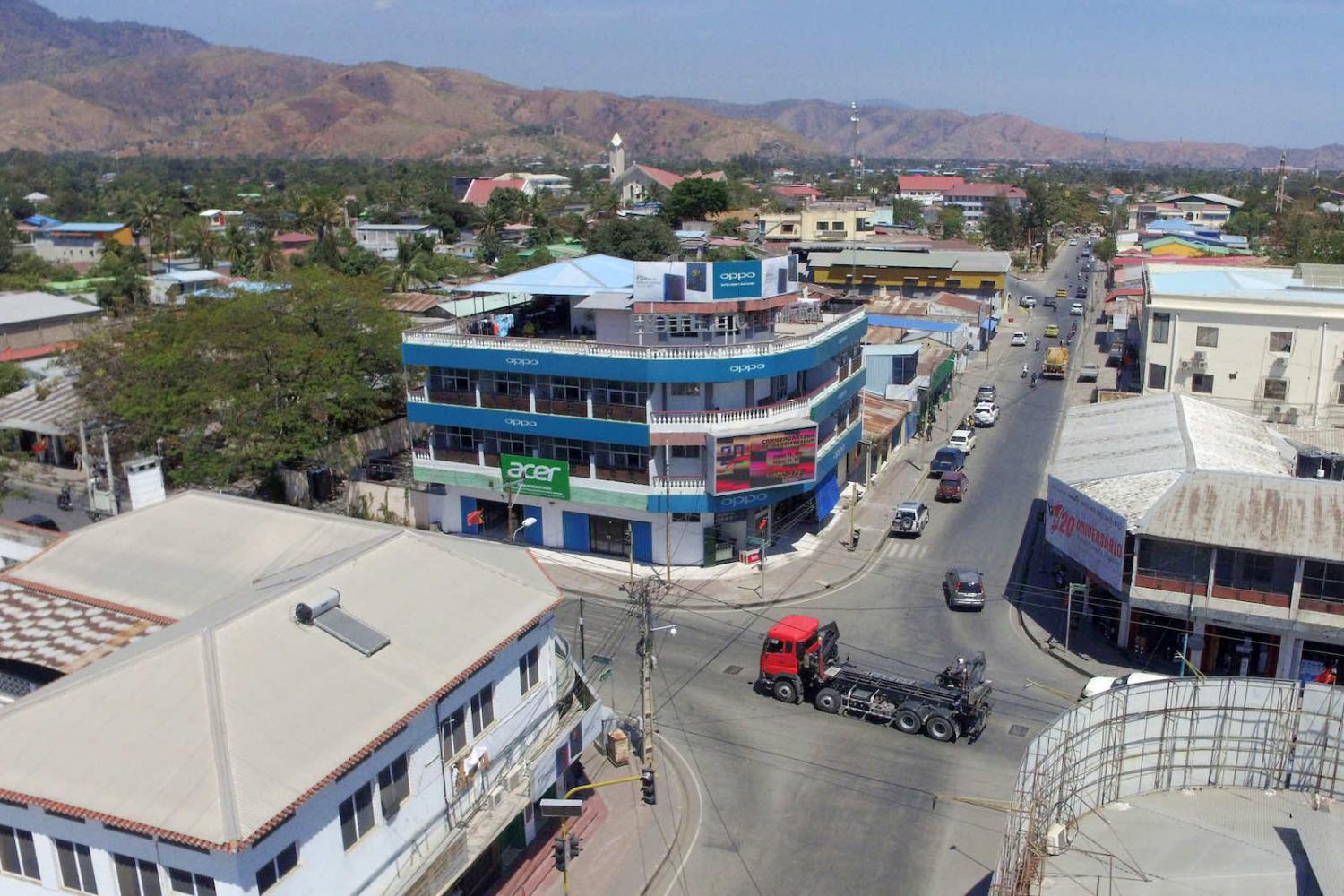After two decades of independence, development in Timor-Leste is exemplified by growing economic activity in Dili, the country’s capital city. Businesses are emerging on various corners, new infrastructure and public buildings are being constructed, and much improved information and communication technology has opened doors for the service sector and private enterprises to grow.
Despite this notable progress, the increasingly vibrant capital has many flaws. The city is prone to disaster as evidenced by the deadly floods that occurred in April this year. Given that many people still live in hazard-susceptible areas, future disasters such as flooding and landslide very likely will claim more lives and cause greater damage.
The consequences of poor urban planning in Dili are self-evident. Sub-standard houses continue to be built in the surrounding hills and along the riverbanks, while demands for improved water supply, waste management, electricity and drainage remain unmet. Traffic congestion is worsening, and a lack appropriate access roads obstructs delivery of basic services to many neighbourhoods.
Without proper management, the population growth and increasing demands will hinder development in the city with long-lasting consequences.
This reveals a lack of housing and land use regulations, as well as poor coordination among key players across sectors. Construction of sub-standard houses, worst of all, reflects widespread poverty in the capital.
The lack of proper waste management systems can have long-term consequences for public health, the quality of drinking water and coastal ecosystems. Prior to Covid-19 pandemic, it was estimated that Dili produced around 100 tons of hazardous medical waste each year, and contributed significantly to country’s plastic waste, of between 54.7 and 68.4 tons per day.
Such challenges force the government to spend more resources on maintenance and recurring works, while the opportunity to develop the city further by capitalising on the current economic activities and potential for future development is neglected. The problems only compound.
Rescuers continue to search for dozens of people still missing after floods and landslides swept away villages in Indonesia and East Timor, killing more than 150 people and leaving thousands homeless. pic.twitter.com/1d9twlidJd
— DW News (@dwnews) April 6, 2021
What can be done to break this cycle? One fundamental approach is to prepare an urban development plan that can guide future growth in the city.
Population growth is the main driving force for urbanisation. In Dili, the population has increased from 173,541 in 2010 to 277,299 in 2015, and is projected to reach 400,000 by 2026. Such growth is not surprising given people move to the capital city for jobs and education. The population growth, in turn, contributes to increasing demand for land, housing, employment, infrastructure and public services. Without proper management, the population growth and increasing demands will hinder development in the city with long-lasting consequences for the wellbeing of the people, economy and environment.
Having an urban development plan for Dili will serve two purposes: first, to identify, address and provide solutions to current problems; and second, to provide direction for the city to grow in the future through better management of urban spaces for various human and economic activities.
It would be a mistake to think that the process to prepare a plan for urban development only involves the government, or that it can be fully implemented within two or three years. Urban planning is a continuous process that cuts across all aspects of development and requires close coordination and participation from the government, community, academia, civil society organisations and private sectors. All these stakeholders have different roles to play, but by developing systems of land use regulations, the government can create balance between private aims with social purposes. Planning documents for urban development must be dynamic – updated and adjusted when situation requires.
Urban planning cannot solve existing problems overnight, but it helps to identify the underlying causes and enables the formulation of long-term solutions, and will most definitely help to improve development in the urban fringe areas such as Hera-Metinaro and Dare.
So, the Timor-Leste government must define and enforce land use regulations in areas for future development to ensure access to basic infrastructure, goods and services, as well as protection and management of lands vulnerable to disasters. This will not only contribute to improving local quality of life and productivity, but most importantly, avoid the formation of slums in the future.
Urban planning helps to create a balance between reactive measures and long-term solutions. For example, minimising the impacts of flood in Dili cannot be addressed only with the construction of adequate infrastructure, but also through reducing the sedimentation of rivers and prohibiting constructions of houses in flood hazard areas. Similarly, traffic congestion cannot be addressed by enforcing road regulations alone, but also through management of parking spaces along the roads and application of strategy for diversifying road utilisation.
After two decades of independence, it is time to ensure that the development of Dili is a guided process rather than one defined by reactivity and opportunism driven exclusively by power and money. It is time to develop Dili as an envisioned city.
Urban planning can help Dili to develop in a more organised way, but it cannot possibly meet the increasing demands for land and housing triggered by the concentration of chances to improve standard of living. Therefore, the biggest challenge for the country at large is to create opportunities in other municipalities to ease the pressure of urbanisation in Dili.

